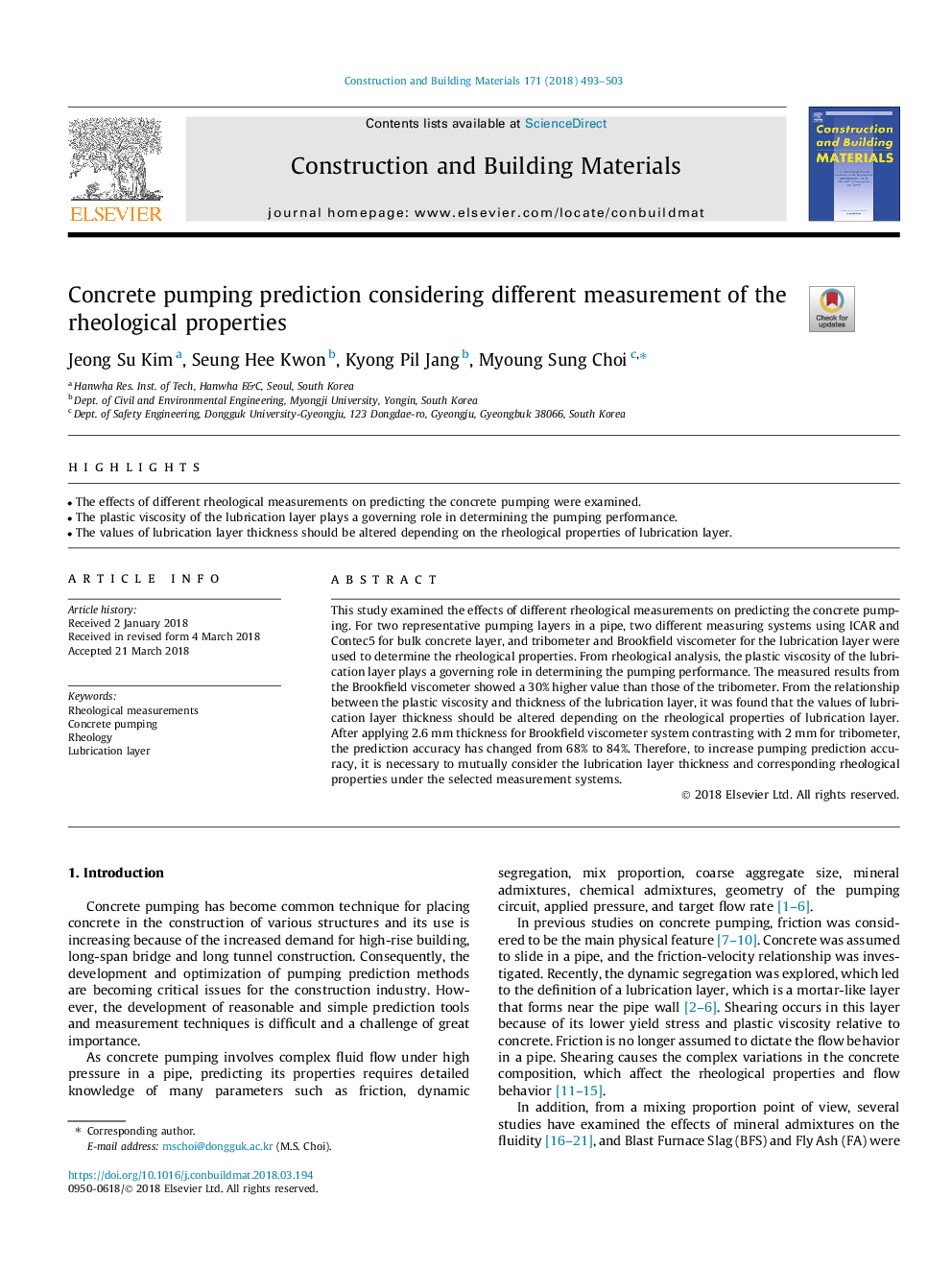| Article ID | Journal | Published Year | Pages | File Type |
|---|---|---|---|---|
| 6714188 | Construction and Building Materials | 2018 | 11 Pages |
Abstract
This study examined the effects of different rheological measurements on predicting the concrete pumping. For two representative pumping layers in a pipe, two different measuring systems using ICAR and Contec5 for bulk concrete layer, and tribometer and Brookfield viscometer for the lubrication layer were used to determine the rheological properties. From rheological analysis, the plastic viscosity of the lubrication layer plays a governing role in determining the pumping performance. The measured results from the Brookfield viscometer showed a 30% higher value than those of the tribometer. From the relationship between the plastic viscosity and thickness of the lubrication layer, it was found that the values of lubrication layer thickness should be altered depending on the rheological properties of lubrication layer. After applying 2.6â¯mm thickness for Brookfield viscometer system contrasting with 2â¯mm for tribometer, the prediction accuracy has changed from 68% to 84%. Therefore, to increase pumping prediction accuracy, it is necessary to mutually consider the lubrication layer thickness and corresponding rheological properties under the selected measurement systems.
Related Topics
Physical Sciences and Engineering
Engineering
Civil and Structural Engineering
Authors
Jeong Su Kim, Seung Hee Kwon, Kyong Pil Jang, Myoung Sung Choi,
